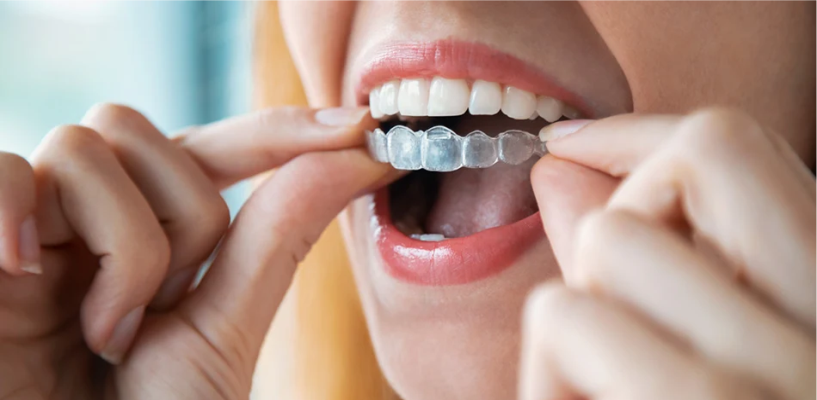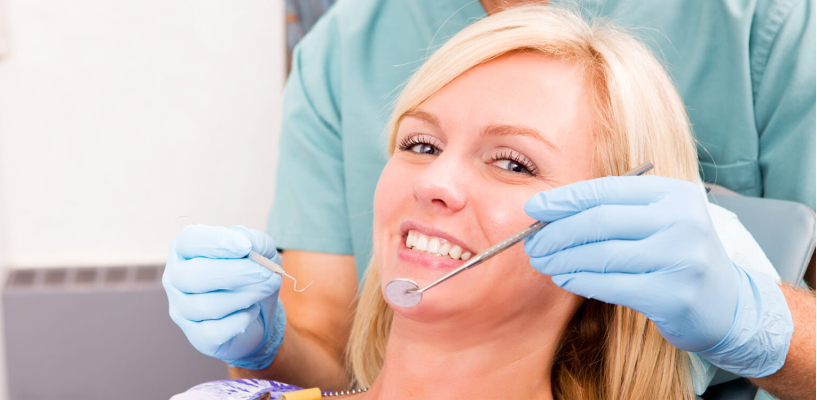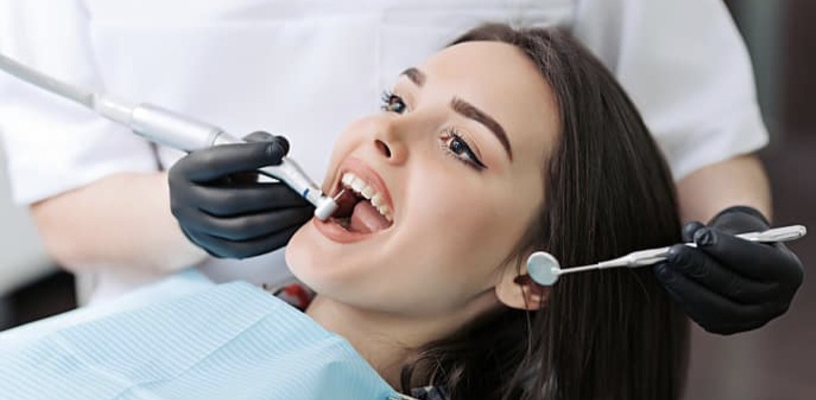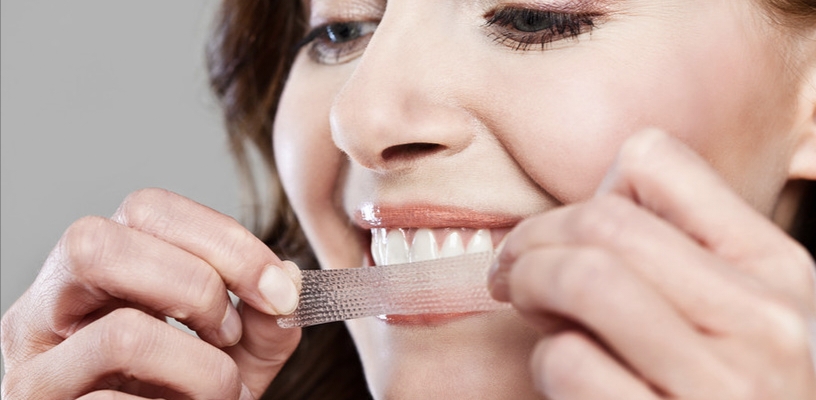
Is Invisalign Better Than Braces?
Two popular orthodontic treatments are Invisalign and traditional metal braces for correcting crooked teeth. Both methods are considered effective solutions. However, it depends on the patient’s requirements and personal preferences which method will be an ideal choice for them.
If a patient is experiencing mild to moderate misalignment, then Invisalign will be a better option. However, in severe misalignment cases, traditional braces is a good choice. As it may be a challenging decision for you to decide which treatment to choose, it is good to know the advantages and disadvantages of braces and Invisalign. You may also get help from your orthodontist, do research yourself, and ask questions that will help to make an informed decision.
Understanding the debate: Invisalign v/s braces
Let’s understand more about Invisalign and braces to know which dental treatment method will be more effective according to your oral health.
-
The Basics: What are Invisalign and Braces?
-
Invisalign: Invisalign refers to an advanced orthodontic treatment that makes use of a variety of clear, removable, and personalized aligners that help to straighten the teeth. They are made from a flexible plastic known as SmartTrack. Every 1 to 2 weeks, aligners are made to change to shift your teeth in the desired position.
-
Braces: Braces are a traditional orthodontic treatment that involves brackets that are bonded to the teeth and use wires to align teeth. Braces are generally made from ceramic, metal, and other materials. The dentist may adjust the wires occasionally so that teeth are in place.
-
History and Evolution of Orthodontic Treatments
a. Braces:
Ancient Practices: In early attempts, such as in ancient Egypt and Greece, rudimentary appliances were used.
Modern Braces: In the 18th century, Pierre Fauchard, who is popularly known as the father of modern dentistry used a bandeau which helped to expand the mouth arch. In the 20th century, stainless steel material came that made the braces more efficient.
b. Invisalign:
Invisalign came into existence in the year 1997 by Align Technology, which transformed orthodontic care as it provides removable and less visible options used for teeth alignment.
Advancements: There have been continuous improvements in computer-aided designing and in materials of Invisalign making it a popular choice in comparison to traditional braces
-
Who Uses Invisalign and Braces?
Invisalign is used by teenagers and adults as they prefer aesthetic treatment with an added comfort level. It is also an ideal option for those who are struggling with less complicated dental issues such as spacing and mild crowding.
Braces are a more convenient option for children, teenagers, and adults who need significant improvement, misalignments, and severe malocclusions.
Each dental treatment has its own advantages and disadvantages. The choice must be made based on individual preferences and the patient’s dental conditions.
Comparing costs and treatment duration
-
Detailed cost Analysis: Invisalign vs. Braces
The average cost of Invisalign treatment ranges from $2,000 to $10,000. However, the cost will vary depending on several factors.
The average cost of braces ranges from $5,000 to $7,000. The overall cost may differ depending on different factors.
-
Who influences the cost?
Some common factors that influence the cost of Invisalign treatment are as follows:
-
Severity of Misalignment: If the Invisalign cases are more severe, it will require longer treatment and more aligners.
-
Location: The prices of Invisalign treatment will differ based on the location and the dental practice.
-
Provider Experience: Prthodontics who are more experienced in providing Invisalign treatment may charge much higher fees in comparison to others.
-
Insurance Coverage: Some insurance plans may include some part of Invisalign treatment.
-
Additional Services: Some added costs may be due to consultations, retainers, and follow-up visits.
Common factors influencing the braces' cost are:
-
Type of Braces: If you choose metal braces, then it is budget-friendly in comparison to ceramic or lingual braces.
-
Complexity of the Case: Complicated cases involving braces will require a longer time to straighten the teeth in comparison to others.
-
Orthodontist Fees: The orthodontist fees may differ based on experience, expertise, and location.
-
Insurance and Payment Plans: Some insurance plans may include some portion of the cost, while other insurance plans may not.
-
Maintenance and Adjustments: Regular dental visits are necessary for adjustments that may influence the overall cost.
-
Treatment duration: Which option is faster?
-
Invisalign:The average duration for Invisalign treatment may range from 12 months to 18 months. However, it may vary depending on whether aligners are custom-made or not.
-
Braces:The average duration for braces may be approximately 18 months to 24 months. Braces are a more convenient option for complicated cases that require significant improvement for patients who are struggling with bite issues.
-
Factors affecting treatment time
Some factors that affect the treatment time of Invisalign and braces are as follows:
-
The severity of Dental Issues: If the patient is suffering from severe misalignments, it may take longer to straighten the teeth in comparison to less severe cases.
-
Age: In younger patients, you may experience results sooner as the bone structure is malleable than in older patients.
-
Compliance: The timeline of the treatment may be impacted by whether they maintain oral hygiene or wear aligners or not.
-
Type of Treatment: The treatment time of braces may be reduced due to self-ligating braces or any new technologies.
-
Orthodontist’s expertise: An experienced orthodontist may optimize dental treatment plans for quicker outcomes.
Convenience and Lifestyle Considerations
-
Day-to-Day Life: Invisalign vs. Braces
a. Invisalign:
-
Removability: Aligners can be removed for eating, drinking, and special occasions.
-
Ease of Use: There are no dietary instructions given to patients in Invisalign treatment as they can eat whatever they want. However, they only need to remove the aligners before eating.
-
Comfort: Plastic aligners that are smooth cause less irritation in comparison to gums and cheeks.
b. Braces:
-
Fixed: During the treatment, braces are permanently attached and the patient needs to make necessary adjustments in their daily habits.
-
Adaptation: Patients need to eat foods that do not damage the braces. Foods that are hard or sticky must be avoided.
-
Discomfort: Brackets or wires may cause some amount of discomfort in the mouth even after adjustments.
-
Daily Oral Hygiene Routines
In Invisalign treatment, aligners must be removed for flossing and brushing, which makes it easier to maintain oral health. However, there is only one thing to keep in mind patients need to prevent stains and odors by taking care regularly.
In braces, patients require additional tools such as water flossers or interdental brushes that help to clean the wires and brackets. It is important to maintain oral hygiene as there is a greater risk of buildup of plaque.
-
Aesthetics and Comfort Levels
In Invisalign treatment, as aligners are not visible, they are more appealing. This is good for people who focus on aesthetics. Invisalign is more comfortable as they are personalized according to the fit of the patient and have no sharp edges that cause unnecessary discomfort.
In braces, there may be a certain amount of discomfort and irritation caused to the patient. In terms of noticeability, metal braces are more noticeable than others.
-
Dentist Visits and Maintenance
In Invisalign treatment, the patient may require 6 to 8 weeks for check-ups and may take this time to get the aligners set. There may be fewer emergency visits as there are no wires or brackets that need to be broken.
In braces, there are more frequent visits every 4 to 8 weeks for adjustments and wire tightening. There may be emergency visits required as there are chances of breaking wires and brackets.
Effectiveness and sustainability for orthodontic issues
-
Addressing various orthodontic problems
Invisalign treatment is effective for those who are facing mild to moderate dental problems such as bite irregularities, spacing, or crowding. The treatment may not be suitable for those who have severe malocclusions or those who require tooth movement.
Braces are effective for various orthodontic problems such as complicated bite issues, severe crowding, and misalignments.
Consultation Insights: Questions to Ask Your Orthodontist
Some questions that you need to ask your orthodontist are:
-
What is your recommendation based on my oral health: Invisalign or braces?
-
What will be the advantages and disadvantages of each choice in my case?
-
What will be the outcome of each option?
-
Will there be any limitations in every option?
-
How much time will the treatment last for braces or Invisalign?
-
What will be the overall cost for Invisalign or braces?
-
Will there be any financing options available for every treatment?
-
What will be the post-treatment care?
Final Thoughts: Making an Informed Decision
Before choosing between Invisalign and braces, the patient needs to gather all the information for both treatments. They can also schedule consultations with various orthodontists and dentists to gain a better understanding of both. The dentist will suggest appropriate dental treatment to straighten your teeth according to your aesthetic preferences, lifestyle, convenience, comfort, and cost. Further, you also need to think about the long-term impact of each treatment according to your oral health. Professional guidance is necessary, as it will help to get a better outcome.





